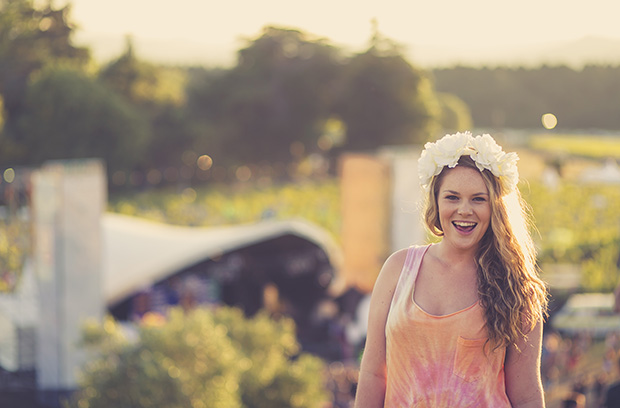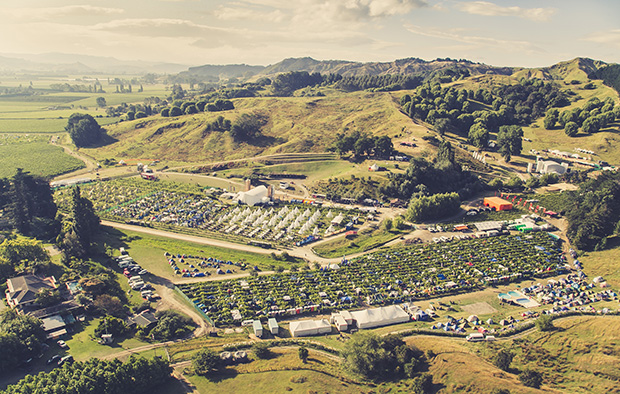In part two of our series on photographing concerts and festivals, pro photographer Paul Hoelen shares some useful tips for shooting in high-contrast and low-light conditions, explains which gear you should use, and takes a look at some of the issues surrounding copyright and intellectual property.
01 GOOD GEAR
The main attributes I consider when choosing gear for a festival are versatility, portability and accessibility. When I shoot for a shorter length of time I often use a waist or shoulder bag with what I want immediately accessible. If I have a longer event or need to carry more equipment, I use a larger daypack.
Remember, you’re going to be lugging your gear around all day – and possibly into the night – so keep it as light as possible. I also carry a light, sturdy monopod. It’s easier to manage in a crowd than a tripod, helps me to shoot in lower light and is great for smooth panning shots. It’s also a terrific platform for video work.
In terms of lenses, fast prime lenses let in a lot more light and therefore permit faster shutter speeds to avoid motion blur in lower light conditions. Fast lenses are also especially handy when you’re not able to use flash or when you’re looking to create a photo with a shallow depth of field. However, you need to move to where the shot is, which is not always possible at big events so a zoom lens can be a saviour. I often use two camera bodies at the same time for this very reason, one with a zoom and another with a prime. You just might get a kink in your neck afterwards though!
There are a range of options to deal with carrying multiple cameras and keeping them accessible to shoot with. If you want to get fancy, the Spyder Belt or Black Rapid chest are two viable choices. At the very least some of the longer sling type straps allow you to place one camera body at least partly out of the way and prevent them knocking into each other!
My typical Canon kit would include four lenses – 24-105mm f4, 50mm f1.4, 70-200mm f2.8 IS and 16-35mm f2.8 – a 580EX II flash (with diffuser) and an ST-E2 transmitter. If I want to go lighter, I sometimes leave the 70-200mm zoom lens behind.
Depending on the forecast, I carry an umbrella and a waterproof sleeve for the camera. Keep a lens cloth handy and watch out for water drops on the front of the lens, they’re easy to miss and very annoying to deal with.
A stepladder can be a fantastic way to get a view above the crowds and I almost always carry one in the boot of the car. I also carry pen and paper, or some other note-taking device (such as the notes feature on an iPhone) to jot down names or contact details of significance.
Shooting on stage requires plenty of trust from the stage and tour managers, especially when you are in full view of the crowd. Be professional, keep a low profile and make sure you know where you can go and when. Establish the boundaries and stick to them. Canon EOS 5D Mk III, Canon 16-35mm f2.8L lens @ 16mm, 1/25s @ f/7.1, ISO 6400, hand held.
02 HOW TO HANDLE HIGH CONTRAST
Rarely do you have the ability to control the lighting at a festival and often the conditions are far from ideal. Direct sunlight presents challenges immediately in that the extreme contrast range can cause blown highlights or blocked shadows.
You can improve your camera’s ability to handle high-contrast lighting by switching to Raw mode, which can handle a wider range of tones than JPEG. You’d be surprised by how much more detail you can pull out of the shadows or back from the highlights in comparison.
One technique I use is to squint into high-contrast areas. This gives me a much better idea of what the camera can actually see. (Our eyes can see much more detail in high-contrast lighting than the camera.)
To deal with high-contrast conditions, try to reposition, recompose and expose for either the bright or dark areas of the scene – but not both. An alternative is to come back (earlier or later in the day) when the light is more even or to introduce artificial lighting.
During the day, flash can be surprisingly useful to fill shadows and overcome the huge contrast that direct sun and harsh lighting conditions create. At night you need to be discerning with its use as it can be very distracting and it will often kill the mood of any natural lighting. I use a diffuser (such as a Stofen or Gary Fong Light Sphere) to soften the light from the flash and create more flattering results. If I have time, I sometimes set up an off-camera flash to add drama or start playing with the high-speed sync on the flash. Keep in mind that in some performances, flash is not allowed at all.
"I had to push the ISO up to 10000 to get this shot handheld," says Hoelen. "I deliberately exposed for the crowd rather than the stage to convey the scale of the event and show the large number of festival goers." Canon EOS 5D Mk III, 16- 35mm 2.8L II lens @ 25mm, 1/100s @ f/4.5 ISO 10000.
03 LOW LIGHT
Low light is another challenge that seems to come up quite regularly at festivals. In terms of shutter speed, if you are hoping to capture sharp images (and avoid motion blur) a minimum speed of 1/focal length of the lens (say 1/100s shutter speed for a 100mm lens) is a good benchmark. You can increase the camera’s sensitivity to light by increasing the ISO, but at the risk of introducing noise into the image. Every camera has a different ability to handle noise and it’s useful to know what the usable ISO range of your camera is. Fire off some test shots at different ISO settings and check the noise levels on a computer monitor zoomed to 100 or 200%. With my Canon 5D Mark III, I have taken usable images at ISO 10,000!
Most DSLRs cameras produce usable images up to around ISO1600, then start deteriorating exponentially. If it comes to a compromise, remember that noise is easier to deal with than a blurry photo!
If you have to use a lower shutter speed, make sure you make your camera as stable as possible. Leaning against something solid, locking your elbows in and shooting at the end of breathing out are all helpful techniques for stability.
"Lighting will often reach a crescendo at the same time as the music, as was the case here. Be prepared – you don’t want to be fumbling with a lens change when the moment is upon you!" says Hoelen. Canon EOS 5D Mk III, 16-35mm f2.8L II lens @ 23mm, 1/60s @ f/4, ISO 6400.
04 HOW TO HANDLE COLOUR
Many events use large arrays and varieties of artificial lights. Music concerts in particular change the lighting frequently. This can play havoc with white balance, and your camera’s auto settings won’t always get the colour right. One way to get around this is to shoot in Raw. That way, you can at least adjust the white balance easily in post-production.
"I planned to be at this spot for the warm afternoon light," says Hoelen. "All I needed was a willing subject." Canon EOS 5D Mark III, 85mm f1.8 lens, 1/800s @ f/2.2, ISO 160.
05 COPYRIGHT
With any festival it pays to find out if there are any restrictions on you with regard to copyright. This is only relevant if you plan to use your images commercially. Some event organisers and performers place limitations on what you can and can’t do with your images and it’s a good idea to sort this out with a phone call before you invest hours of your time shooting.
Also, with some culturally-orientated events it may be completely inappropriate to shoot parts of the event at all. Ask questions and be prepared to negotiate. Approaching the right people beforehand shows a certain respect that will often be returned. In many cases, this simple approach has helped me get better access to events and navigate some of the bigger minefields of intellectual property.
See you out there!
Shooting festivals and events can be hugely satisfying. I find that this type of photography works best when you’re organised – both in terms of your gear and what you hope to achieve. That said, you also need to be flexible enough to ditch your plan and follow the energy and action as it unfolds. Be aware of what’s happening around you, follow your instincts and be creative. Good luck and maybe I’ll see you out there at the next big event! ❂

"Look for unusual perspectives," says Hoelen. "Here I arranged a late afternoon flight to shoot an aerial photo of the stage and camping areas." Canon EOS 5D Mark III, 24-105mm f4L IS lens @ 24mm, 1/1250s @ f/10, ISO 800, hand held.
In part one of this feature Paul Hoelen discusses planning, access and establishing shots.







